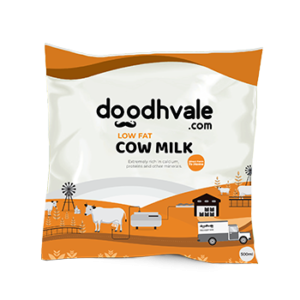In the realm of dietary choices, few topics stir as much debate as the selection of milk. Amidst the aisles adorned with varieties ranging from whole to skim, one often finds the spotlight on low-fat milk. Positioned as a healthier alternative, it beckons health-conscious consumers with promises of reduced fat content and potential benefits. But amidst the clamor of conflicting opinions, how does low-fat milk truly measure up? Let's embark on a nutritional journey to unveil the myths and merits of low-fat milk.
Understanding Low-Fat Milk:
Low-fat milk, as the name suggests, is milk that has undergone a process to reduce its fat content. Typically, it contains around 1% to 2% fat, compared to the higher fat content found in whole milk. This reduction in fat is achieved through skimming, where the milk is separated from its cream component.
Myth vs. Reality:
Myth 1: Low-Fat Means Less Nutritious
Contrary to popular belief, opting for low-fat milk doesn't necessarily equate to sacrificing nutritional value. While it's true that fat-soluble vitamins like A, D, E, and K are present in the fat content of whole milk, many low-fat milk varieties are fortified with these vitamins to compensate for their reduction in fat. Thus, low-fat milk can still serve as a significant source of essential nutrients.
Myth 2: Low-Fat Milk Lacks Flavor
Some may argue that removing fat from milk compromises its taste and texture. However, advancements in processing techniques have allowed for the production of low-fat milk with a flavor profile comparable to whole milk. Moreover, many consumers find that the slightly lighter taste of low-fat milk is preferable, particularly in beverages like coffee and smoothies.
Myth 3: Fat-Free Is Always Better
While it's tempting to assume that eliminating fat entirely is the healthiest option, it's essential to recognize the role of dietary fats in our bodies. Fat serves as a concentrated source of energy and aids in the absorption of fat-soluble vitamins. Opting for fat-free milk may indeed reduce calorie intake, but it's crucial to ensure that one's diet maintains a balance of nutrients.
The Merits of Low-Fat Milk:
1. Heart Health: Lowering dietary intake of saturated fats, found in high amounts in whole milk, is associated with reduced risk factors for cardiovascular diseases. Choosing low-fat milk can contribute to a heart-healthy diet.
2. Weight Management: For individuals striving to manage their weight, opting for low-fat milk can be a sensible choice. By reducing overall calorie intake without sacrificing essential nutrients, it aligns with weight management goals.
3. Bone Health: Milk, regardless of fat content, remains an excellent source of calcium and vitamin D, both crucial for maintaining strong and healthy bones. Low-fat milk provides these essential nutrients without the added calories from fat.
In Conclusion:
Low-fat milk emerges not as a mere alternative, but as a viable and nutritious option for individuals seeking a balanced diet. While it's essential to acknowledge the benefits of whole milk, low-fat milk holds its ground by offering a reduced-fat alternative without compromising on essential nutrients. As with any dietary choice, moderation and individual preferences should guide consumption. Whether enjoyed in a steaming cup of coffee or poured over a bowl of cereal, low-fat milk stands as a testament to the evolving landscape of nutrition, where health-conscious choices intersect with culinary delight.


